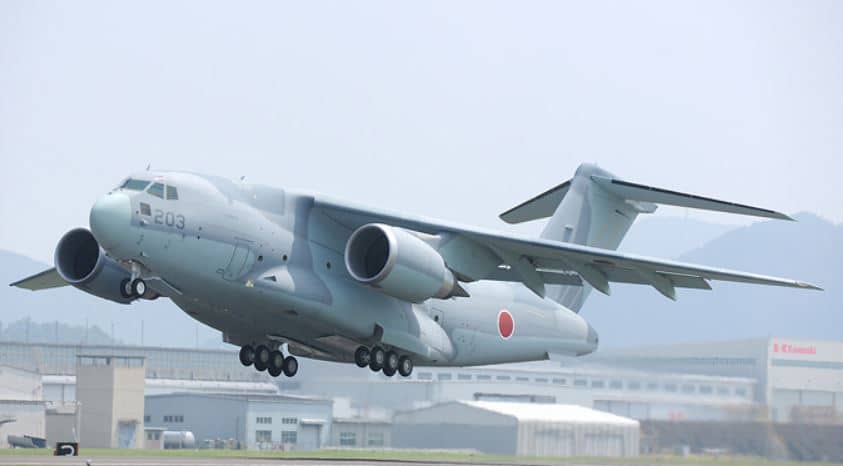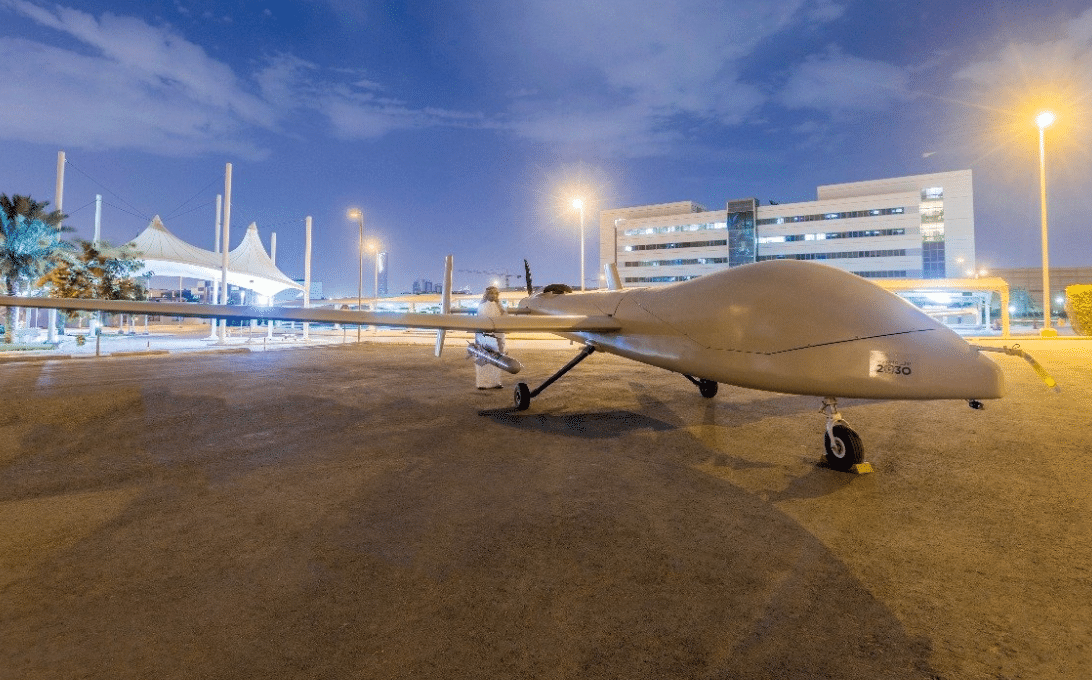2121Views 18Comments

Turkish Navy announces successful test-fire of Atmaca anti-ship missile
At the 8th Marine Systems Seminar, the Turkish Navy’s technical head Admiral Ahmet Çakır announced that the domestically developed Atmaca anti-ship missile (AShM) had undergone a successful test firing.
“We are all closely following the Atmaca project and the first shots are being made and next year we will be shooting on the ship’s platform and we aim to make the Atmaca guided missile we plan to replace Harpoon as a [missile] with superior capability, long range, superior capabilities than Harpoon,” said Çakır.
The Atmaca is similar in capability to the Exocet, C-802 and Harpoon. The Atmaca AShM weighs 800 kg with a 200-kg warhead. It can travel at subsonic speed and can reach a range of up to 200 km. The guidance suite comprises of a INS/GPS system with a terminal-stage active radar-homing (ARH) seeker.
Turkey intends to supplant the Microturbo TRI 40 miniature turbojet engine powering the Atmaca and Stand-off Missile (SOM) air-launched cruise missile (ALCM) with the domestically developed Kale 3500.
TRT Haber reports that serial production of the Atmaca is scheduled to begin in 2018. The Atmaca will be deployed from the Turkish Navy’s MILGEM Ada-class corvettes and G-Class frigates.
With Turkey’s aim to supplant the Harpoon, the Atmaca should make its way to other surface platforms (e.g. fast attack crafts) as well as aircraft and submarines. The provision of the Kale 3500 will also give the Turkish industry the means to fully-source its stand-off range missiles (i.e. Atmaca and SOM).
Turkey’s aim is to localize the supply of all major munitions, including air-to-air, air-to-surface, surface-to-air and sub-surface solutions. Solutions include the Atmaca, SOM, HİSAR, BORA, Orka and Akya, Mizrak, Merlin and Peregrine, among others. Many of these weapons on display at the 2017 International Defence Industry Fair (IDEF), which took place in May in Istanbul.



18 Comments
by U
How successful can such subsonic AShMs be against current new generation Air Defense Systems?
by ahmria
it depends on the flight profile of such missiles. Most of these anti ship missiles will be skimming the tops of the waves and that would generally mask their approach until their radar seeker becomes active.
by Joseph
There are more and more supersonic ramjet powered AShMs being developed, so the current subsonic sea skimming AShMs must have been considered not as effective as before.
But there are also problems of current supersonic AShMs, According to “Naval Engineers Journal Volume 109 Issue 1 1997 J. F. McEachron — Subsonic and Supersonic Antiship Missiles- An Effectiveness and Utility Comparison”, to fulfill it’s range requirements supersonic AShM must fly at least part of its trajectory at a higher, more vulnerable altitude, also supersonic AShMs can’t fly as low as subsonic AShMs even in terminal phase. And due to it’s speed supersonic AShM has more significant IR signature.
The countries with supersonic AShMs have yet to retire their subsonic sea skimmers, I think that is saying something.
Russia and China both have ramjet powered supersonic AShMs, but both countries also developed subsonic AShMs with supersonic terminal phase, that is Russian 3M-54 Klub and Chinese YJ-18 (which is generally considered as a copy of 3M-54E). I think these two are probably the most effective AShMs at the moment.
by Headstrong
They’re actually stages of development. First came the subsonic missiles, then the Klub and now the supersonic Brahmos.
Even if the supersonic missiles fly at higher altitudes in their initial and mid phases, they’re too fast and too far for effective engagement. At least, for now
The next stage is hypersonic missiles. Brahmos NG
by U
But once they are detected I think its very hard that they stand a chance against modern air defense systems, unless its a salvo atack overwhelming the air defense system.
I think countries should now invest in supersonic AShMs, or something like the best of both worlds solution for eg Russian 3M-54 Klub as Joseph has informed above.
by Joseph
Actually I don’t believe that is true. Russia long had supersonic AShMs, they were just not using ramjet. Klub came in later, is one of Russia’s latest AShMs. In term of timeline according to wikipedia BrahMos entered service since 2006 and Klub entered service in 2012.
China’s supersonic ramjet AShM code named YJ-12 and you can see even from the code name it came before YJ-18.
by Headstrong
Not quite. Klub has been in service with the Indian Navy since the later versions of its EKM submarines and the Talwar class. That would make it circa late 90s and early 2000s. Yes, the previous avatar of BrahMos probably predates this (Granit and Oniks), but the real developments happened after the turn of the century after the Indians came on board. Now, of course, development of Brahmos II is ongoing
by Syed Rehman
While its good to see a muslim country progressing. This is old tech. America is currently testing deployment of its ship mounted laser cannon, and electromagnetic rail gun. I get that its going to take time to catch up. But it just shows how much catching up to do we have.
by Joseph
Well, BrahMos is based on Russian P-800 Oniks. According to wikipedia Oniks is in service since 2002 and produced in 1987. That is how early Russia had supersonic ramjet AShM. That is definitely early than Klub, isn’t it?
by sam
turkey Aselsan has already tested railgun and working on laser weapons, but they are different, those are against air targets like drone or jets, and against sea surface small vessels. because against big warships, only anti ship missile can work, ofcourse it should have improved radar jamming systems, to hit target undetected, that is why every country is testing improved anti ship missiles
by Headstrong
Development of the Klub/Kalibr family of missiles reportedly began in 1985, about the same time as the Granit/Oniks family. The point is that there is far more ongoing R&D on the ‘faster’ aspects of missile development (certainly from the Indian/Russian perspective). That is a point you have made too in your original comment. As SAM systems get more sophisticated, my guess is that the developers are bargaining on even more speed to counter them. Terminal manouevers too.
by WOLF
There is development of a supersonic AShMs from Turkey, but it’s being kept very ‘hush hush’ only some scientific journals from universities have been released on ramjet developments with Turkish Defence Industry.
https://uploads.disquscdn.com/images/85cf6a8b997127674b645b4a2b1090f8f5381621d3ddbb0d07b5c7a22a9bd59b.jpg
https://i.hizliresim.com/dP6MAV.jpg
by Joseph
Oniks is in production in 1987, if Klub started development in 1985 then how did you reach the conclusion that they started development “about the same time”?
Anyway, my point was supersonic speed carries significant problems too and the problems are even more obvious on Oniks/BrahMos. Front air intake means there is very little space available for radar. Supersonic speed also means there is very little time for the radar seeker to lock on a target.
I think this problem and the problems I listed before is why Klub was developed.
Those problems would be even more profound on hypersonic missiles. Even at high altitude hypersonic speed would be enough for air friction to melt most metal, imagine the infrared signature of such missile. I also doubt a mach 5 missile can fly at sea skimming level. Flying at hypersonic speed requires even more fuel, further affects such missile’s range.
I think the designers of hypersonic cruise missiles are betting everything on the speed. After all, the success rate of intercepting ballistic missiles at terminal stage (mach 10 speed) is low.
Then again we will have to wait and see.
by Joseph
Russia has a even earlier version of supersonic ramjet AShM, that is P-270 Moskit, which is in service since 1984 and in production in 1983.
I don’t think the fact Klub is developed after supersonic AShMs still needs further debate.
by Headstrong
‘I think the designers of hypersonic cruise missiles are betting everything on the speed’
Thank you. Exactly the point I was making. Plus the fact that almost all Russian R&D is focused on supersonic and hypersonic missiles, not further versions of Klub, unless its the 2500 km + Kalibr family
by Joseph
That looks quite similar to Japanese XASM-3. Different from Russian design.
by TZK
A hypersonic weapon is going roughly a mile a second so if you put in 1,000 seconds of fuel you can go 1,000 miles – so lots of standoff capability making current countermeasures obsolete. The cons are that they will quite likely be “kinetic energy” strike weapons, which will limit where they can be used. Biggest hurdle is technology as you need materials that can operate at very high temperatures and a guidance system able to function faster still. The may be used as long range artillery shells if they cannot be accurately guided.
by Joseph
Oniks/BrahMos already weight 3 tons and almost 9 meters long. That is about twice as long as subsonic French Exocet and weight more than 4 times as much. Hypersonic BrahMos II is likely to be even larger and heavier.
Further increase in size and weight could affect it’s choice of launch platforms. Keeping the current size and weight could drastically affects it’s range.
Also scramjet engine in general (used by BrahMos II) has a low thrust to weight ratio (around 2 according to scramjet wikipedia). So to archive initial hypersonic speed quickly BrahMos II likely requires a rocket booster, further increase it’s size.
Both US and China studied and tested scramjet engines and both seem to be more interested in making hypersonic aircrafts and spacecrafts (US:XS-1, China:Teng Yun) according to this article: http://www.popsci.com.au/tech/aerospace/american-and-chinese-aircraft-could-be-flying-6500-kmh-by-2030,465422
Neither seem to be interested in using it to make AShMs or cruise missiles at least at the moment. There has to be a reason there.
India has been known to start overly ambitious projects but this time Russia is involved, so we will have to wait for it to come out to be certain of it’s capabilities.